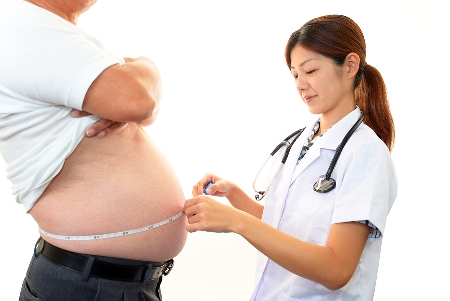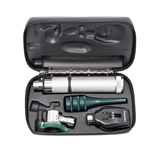According to IBISWorld general manager (Australia), Karen Dobie, longer working hours and busier schedules, which drive consumption of quick and easy takeaway foods, and increasingly sedentary lifestyles are key drivers behind growing obesity levels.
"Current ABS data shows that 55.7 per cent of Australian women and 70.3 per cent of Australian men are overweight, an increase of 1.6 per cent for females and 1 per cent for males compared with five years ago," said Dobie.
"Despite growing awareness about the importance of a healthy diet, the average household continues to spend about 8.4 per cent of their income on soft drink and confectionery, and in 2013-14 IBISWorld forecasts Australians will spend $11.7 billion on unhealthy fast foods."
While many Aussies are consuming unhealthy treats, Dobie said health consciousness is also on the rise, driving a significant shift towards organic, natural and preservative-free foods. This trend is boosting spending across traditional health and weight-loss industries.
"The get-healthy trend has extended to our working lives, with many employers promoting and subsidising health and fitness programs for staff," Dobie added.
In the coming five years, IBISWorld expects spending on health and weight loss to continue increasing, to reach more than $7 billion by 2018-19, as more Australians seek help to combat their growing waistlines.
The areas tipped to grow the fastest in the coming years are personal training, gym memberships, weight-loss products and weight-loss counselling services, while sporting goods, home gym and fitness equipment, and athletic clothing and footwear are expected to remain the highest spending areas.
|
Spending category |
2013-14 ($ million) |
2018-19 ($ million) |
Annualised change (%) |
|
Gym memberships |
858.0 |
1,000.3 |
3.1 |
|
Personal training |
390.0 |
501.3 |
5.1 |
|
Sports clubs, training and club memberships |
737.5 |
756.0 |
0.5 |
|
Sporting goods |
1,554.2 |
1,671.0 |
1.5 |
|
Athletic clothing and footwear |
1,136.8 |
1,115.8 |
-0.4 |
|
Home gyms and fitness equipment |
1,202.5 |
1,297.2 |
1.5 |
|
Weight-loss counselling services |
332.8 |
385.8 |
3.0 |
|
Weight-loss products |
280.7 |
327.6 |
3.1 |
|
Self-help books |
38.0 |
35.4 |
-1.4 |
|
Exercise DVDs |
33.1 |
33.8 |
0.4 |
|
Total |
6,563.6 |
7,124.2 |
1.7 |
Weight-loss services and products
With the number of diet brands and weight-loss products increasing, combined with expanding waistlines and increasing health awareness, IBISWorld forecasts annualised growth of 3.1 per cent for weight-loss products over the next five years to reach $328 million.
"From frozen dietary meals to diet pills, supplements, weight-loss shakes, protein powders, meal replacements and low-carb protein bars, the demand for weight-loss products is booming," said Dobie.
IBISWorld identifies key players in this segment as Jenny Craig, Weight Watchers, Light n' Easy and Atkins Nutritionals – which has recently re-launched its low-carbohydrate diet program, The New Atkins Nutritional Approach, in the Australian market with local celebrity ambassador Fifi Box.
Counselling
Accounting for 52 per cent of total weight-loss services, IBISWorld forecasts counselling services will accrue revenue of $332 million in 2013-14 and increase at an annualised 3.0 per cent over the next five years to just under $386 million in 2018-19.
"More people are choosing to undertake individualised weight-loss programs tailored to specific needs combined with personal counselling to expedite results," said Dobie.
"As a result, personal counselling has grown as a share of revenue, at the expense of group counselling. A surge in smartphone and computer programs that can store and monitor food consumption and exercise levels has reduced the need for group counselling."
Gym memberships
"The number of venues with state-of-the-art equipment, group fitness classes and a wide range of facilities – including pools, saunas and even saltrooms – continues to grow in response to increasing consumer demand," said Dobie.
"Gyms have been excellent at responding to increasing and diverse working hours, opening in more locations with longer operating hours."
In 2013-14, IBISWorld expects Australians will spend almost $860 million on gym memberships, and this is forecast to increase by 3.1 per cent per annum to reach $1 billion in 2018-19. Dobie highlighted spring as a key period for gyms to grow their membership base, with the warm weather and promise of swimsuits kicking many Aussies into gear to work off the winter wobble.
Personal training
The fastest growing segment for health and fitness expenditure, personal training, is expected to grow by an annualised 5.1 per cent over the next five years to reach over $500 million in 2018-19.
"Demand for personal trainers has recently skyrocketed, and this is expected to continue over the next five years as Australians seek support and motivation from fitness experts to achieve faster and more effective results," said Dobie.
Similar to gym memberships, Dobie flagged spring and summer as key periods for personal training, with services often offered in outdoor areas such as parks and beaches.
"Specialised group training sessions and boot camps – which often run for a six- to eight-week period – are booming in popularity, with many people finding it easier to commit to a short-term program than a gym membership."
Sports clubs
According to IBISWorld, participation in sporting clubs has gradually declined for both women and men over the past five years, primarily due to time constraints and increased gym participation. In 2013-14, sports clubs are expected to generate about $740 million in revenue, growing only marginally over the next five years to top $750 million in 2018-19.
Sporting goods
The overall increase in participation in physical activity has increased demand for many sporting stores. Dobie said, however, that increased competition from international online stores has squeezed profit margins for sporting goods retailers slightly.
In 2013-14, IBISWorld expects that Australian sporting goods retailers will collect about $1.6 billion, which is projected to increase by an annualised 1.5 per cent over the next five years to $1.7 billion.
Athletic clothing and footwear
While online shopping has slightly affected sporting goods retailers, Dobie said Australian bricks-and-mortar athletic clothing and footwear retailers are facing more challenging trading conditions, resulting in a marginal forecast decline for the industry in the five years through 2018-19.
"Demand for sports clothing and footwear in Australia is declining due to the increasing number of people buying online from cheaper overseas operators. Major athletic brands are usually global brands, and these products are easily accessible via the internet at lower prices," Dobie said.
Nevertheless, it is not all doom and gloom, with IBISWorld highlighting higher quality products and specialised products – such as compression wear, specialised sporting items and high-quality footwear – as potential growth areas.
Home gyms and fitness equipment
While overall retail of home gym and fitness equipment has recently risen as customers look for convenient ways to increase their fitness participation, falling costs for equipment has limited revenue growth. Revenue is forecast to rise by an annualised 1.5 per cent over the next five years to reach $1.3 billion in 2018-19.
Self-help books
IBISWorld forecasts self-help books retailing will decline over the coming five years, as consumers opt for free and cheap online options and applications, or services provided by their fitness facilities.




